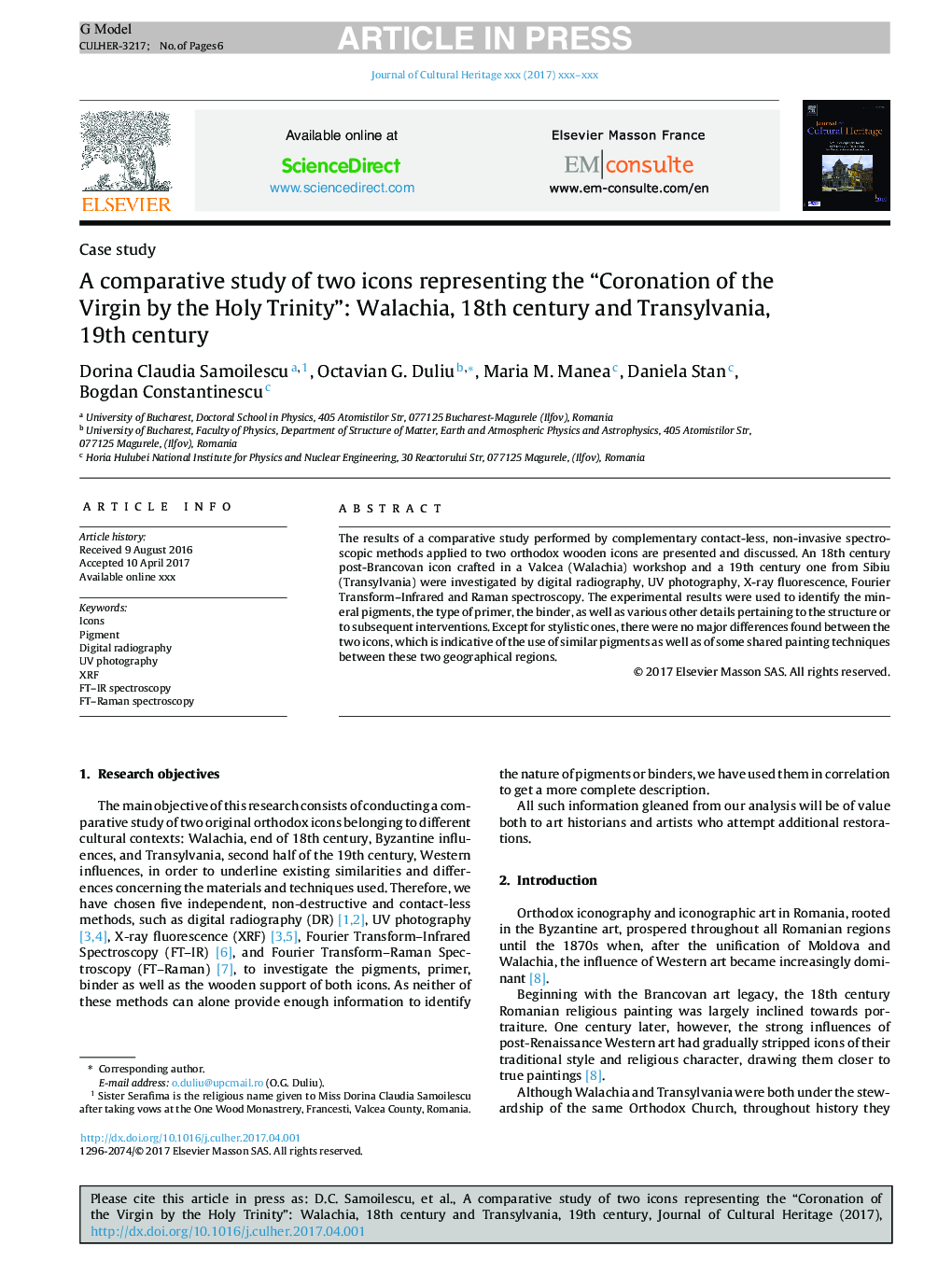| Article ID | Journal | Published Year | Pages | File Type |
|---|---|---|---|---|
| 5112632 | Journal of Cultural Heritage | 2017 | 6 Pages |
Abstract
The results of a comparative study performed by complementary contact-less, non-invasive spectroscopic methods applied to two orthodox wooden icons are presented and discussed. An 18th century post-Brancovan icon crafted in a Valcea (Walachia) workshop and a 19th century one from Sibiu (Transylvania) were investigated by digital radiography, UV photography, X-ray fluorescence, Fourier Transform-Infrared and Raman spectroscopy. The experimental results were used to identify the mineral pigments, the type of primer, the binder, as well as various other details pertaining to the structure or to subsequent interventions. Except for stylistic ones, there were no major differences found between the two icons, which is indicative of the use of similar pigments as well as of some shared painting techniques between these two geographical regions.
Related Topics
Physical Sciences and Engineering
Chemistry
Physical and Theoretical Chemistry
Authors
Dorina Claudia Samoilescu, Octavian G. Duliu, Maria M. Manea, Daniela Stan, Bogdan Constantinescu,
